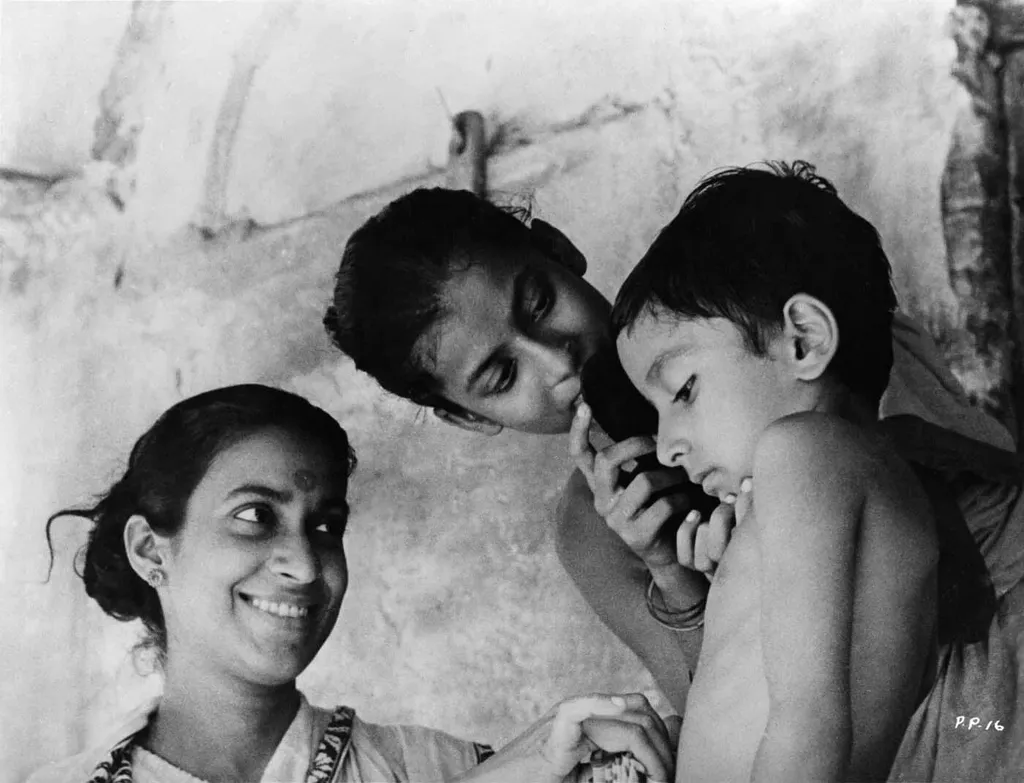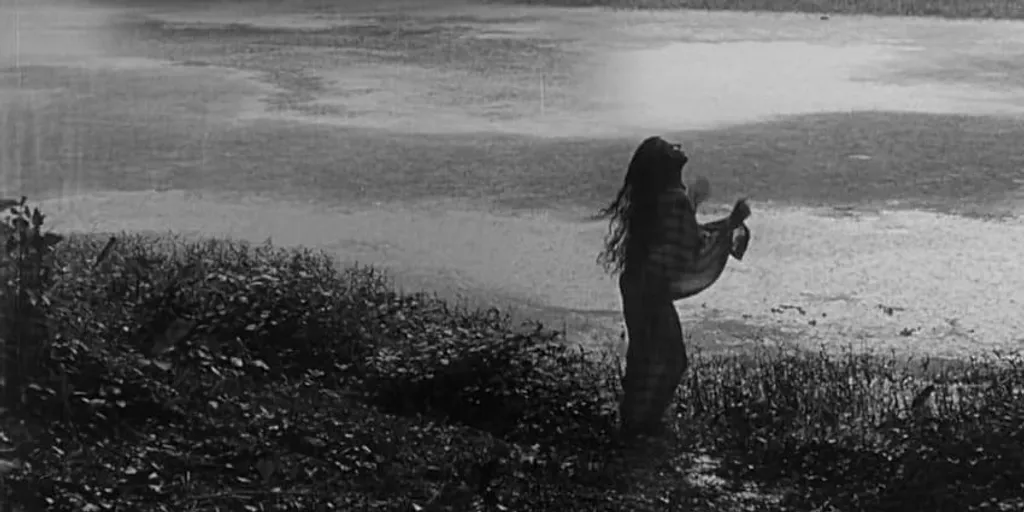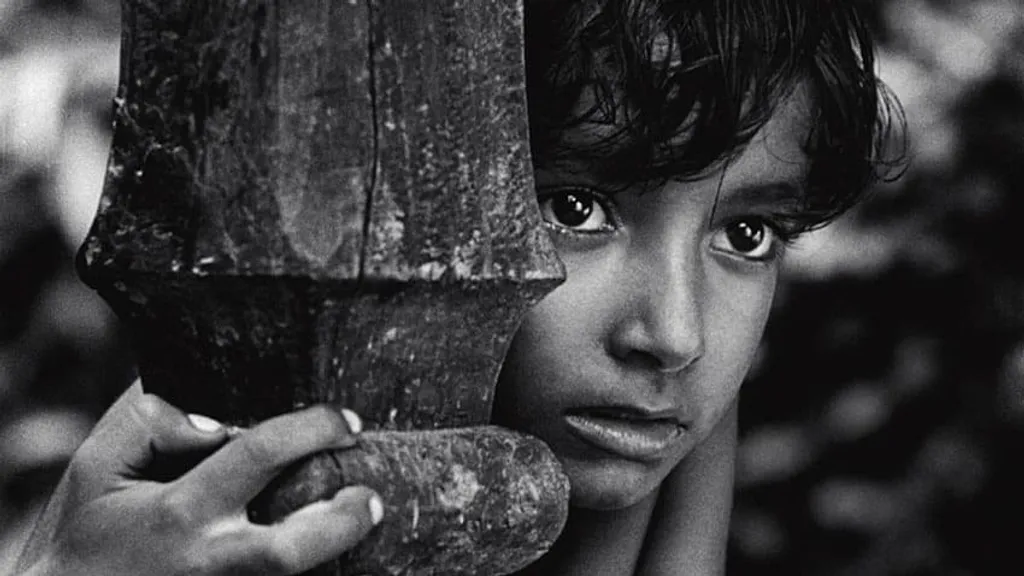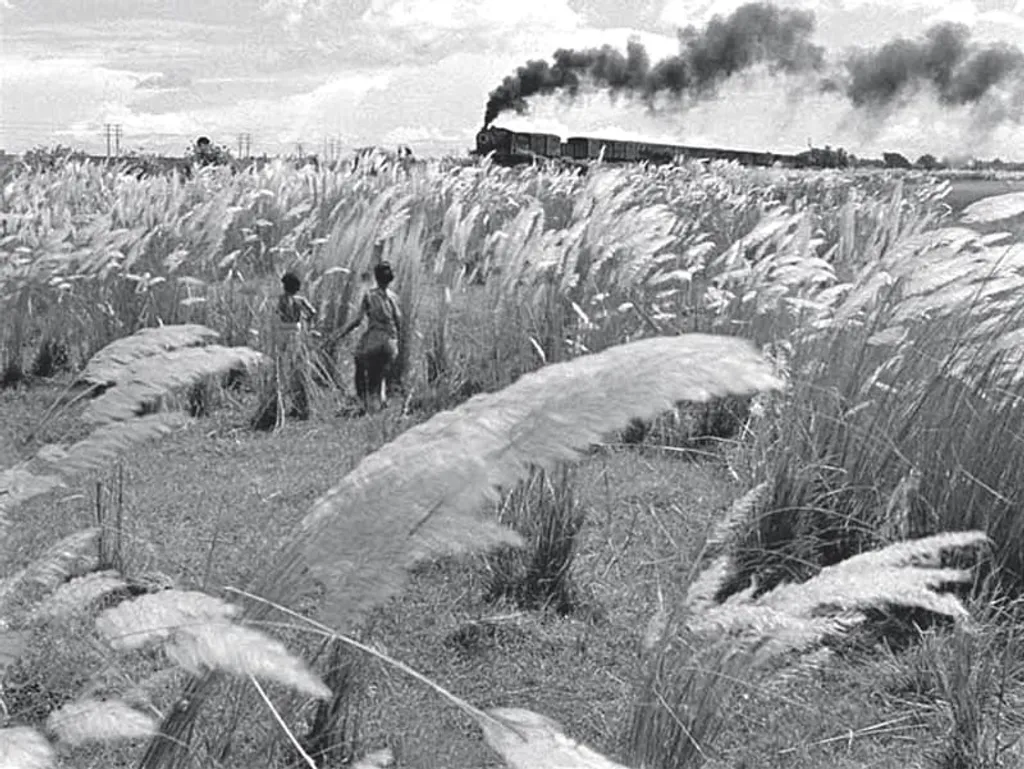പഥേർ പാഞ്ചാലി
പച്ചപ്പ് നിറഞ്ഞ വയലുകളാലും ഉയരമുള്ള മരങ്ങളാലും ചുറ്റപ്പെട്ട ഗ്രാമീണ ഇന്ത്യയിലെ ഒരു വളഞ്ഞ പാതയിലൂടെ നടക്കുന്നത് സങ്കൽപ്പിക്കുക. നിങ്ങൾ പോകുമ്പോൾ, ജീവിതം വിശ്രമിക്കുന്ന വേഗതയിൽ നീങ്ങുന്നതായി തോന്നുന്ന ഒരു ചെറിയ ഗ്രാമം നിങ്ങൾ കാണുന്നു. ഈ പശ്ചാത്തലത്തിലാണ് സത്യജിത് റേയുടെ പഥേർ പാഞ്ചാലി (1955) വികസിക്കുന്നത്.
ബംഗാളിലെ ഒരു ചെറിയ ഗ്രാമത്തിൽ ജീവിതത്തിന്റെ രണ്ടറ്റവും കൂട്ടിമുട്ടിക്കാൻ പാടുപെടുന്ന ഒരു കുടുംബത്തിന്റെ കഥയാണ് ചിത്രം പറയുന്നത്. പിതാവ്, ഹരിഹർ (കനു ബാനർജി), തന്റെ കുടുംബത്തിന് ആവശ്യമായ പണം സമ്പാദിക്കാൻ സ്വപ്നം കാണുന്ന ഒരു പുരോഹിതനാണ്. അമ്മ, സർബജയ (കരുണ ബാനർജി), അവരുടെ രണ്ട് മക്കളായ അപു (സുബീർ ബാനർജി), ദുർഗ (ഉമാ ദാസ്ഗുപ്ത) എന്നിവരെ പരിപാലിക്കുന്ന ഒരു വീട്ടമ്മയാണ്. ദാരിദ്ര്യം, രോഗം, മരണം എന്നിവയിലൂടെ സഞ്ചരിക്കുന്ന കുടുംബത്തിന്റെ പരീക്ഷണങ്ങളും ക്ലേശങ്ങളും സിനിമ പിന്തുടരുന്നു.

പഥേർ പാഞ്ചാലി 1950കളിലെ ഗ്രാമീണ ഇന്ത്യയുടെ സത്ത ഉൾക്കൊള്ളുന്ന ചിത്രമാണ്. വയലിൽ ഉഴുതുമറിക്കുന്ന പുരുഷന്മാർ മുതൽ കിണറ്റിൽ നിന്ന് വെള്ളമെടുക്കുന്ന സ്ത്രീകൾ വരെയുള്ള ഗ്രാമീണരുടെ ദൈനംദിന പ്രവർത്തനങ്ങളിൽ റേയുടെ ക്യാമറ നീണ്ടുനിൽക്കുന്നു. നാട്ടിൻപുറങ്ങളുടെയും അതിൽ വസിക്കുന്നവരുടെയും അതിശയിപ്പിക്കുന്ന ഷോട്ടുകളുള്ള ഈ ചിത്രം ഒരു വിഷ്വൽ ട്രീറ്റാണ്.
ശബ്ദത്തിന്റെ ഉപയോഗമാണ് സിനിമയുടെ ശക്തികളിൽ ഒന്ന്. കിളികളുടെ ചീവിടുകൾ, ഇലകളുടെ തുരുമ്പ് തുടങ്ങിയ പ്രകൃതിയുടെ ശബ്ദങ്ങൾ, പാത്രങ്ങളുടെയും ചട്ടികളുടെയും മുട്ടുകുത്തൽ, കുട്ടികളുടെ ചിരി തുടങ്ങിയ ദൈനംദിന ജീവിതത്തിലെ ശബ്ദങ്ങളുമായി ഇടകലർന്നിരിക്കുന്നു. രവിശങ്കർ രചിച്ച സൗണ്ട് ട്രാക്ക് ഒരു മാസ്റ്റർപീസ് ആണ്, വേട്ടയാടുന്ന ഈണങ്ങൾ, നഷ്ടത്തിന്റെയും വിരഹത്തിന്റെയും സിനിമയുടെ പ്രമേയങ്ങളെ ഉണർത്തുന്നു.

പഥേർ പാഞ്ചാലിയിലെ പ്രകടനങ്ങൾ ശ്രദ്ധേയമാണ്, പ്രത്യേകിച്ച് ബാലതാരങ്ങളുടേത്. അപുവായി വേഷമിട്ട സുബീർ ബാനർജി ഒരു വെളിപാടാണ്, ഒരു ആൺകുട്ടിയുടെ നിഷ്കളങ്കതയും ജിജ്ഞാസയും ഉൾക്കൊള്ളുന്ന ഒരു സൂക്ഷ്മമായ പ്രകടനം. ദുർഗ്ഗയായി വേഷമിട്ട ഉമാ ദാസ്ഗുപ്ത, അവളുടെ കഥാപാത്രത്തെ കുസൃതികളുടെയും ദുർബലതയുടെയും ബോധത്തിൽ നിറയ്ക്കുന്നു.
അതിന്റെ കാതൽ, പഥേർ പാഞ്ചാലി കുടുംബത്തെയും നമ്മെ ബന്ധിപ്പിക്കുന്ന ബന്ധങ്ങളെയും കുറിച്ചുള്ള സിനിമയാണ്. അപുവും അവന്റെ മൂത്ത സഹോദരി ദുർഗയും തമ്മിലുള്ള ബന്ധമാണ് സിനിമയുടെ കാതൽ, അവരുടെ കളിയായ പരിഹാസവും സഹോദരങ്ങളുടെ മത്സരവും ദുർഗ രോഗബാധിതയായപ്പോൾ അഗാധമായ നഷ്ടബോധത്തിലേക്ക് വഴിമാറുന്നു. അപു തന്റെ സഹോദരിയുടെ ചേതനയറ്റ ശരീരം കണ്ടെത്തുന്ന രംഗം സിനിമാ ചരിത്രത്തിലെ ഏറ്റവും വേദനാജനകമായ നിമിഷങ്ങളിൽ ഒന്നാണ്, മാത്രമല്ല മെലോഡ്രാമയെ ആശ്രയിക്കാതെ അത്തരം വികാരങ്ങൾ പ്രകടിപ്പിക്കാൻ അദ്ദേഹത്തിന് കഴിയുന്നു എന്നത് ഒരു സംവിധായകനെന്ന നിലയിൽ റേയുടെ കഴിവിന്റെ തെളിവാണ്.

ദാരിദ്ര്യത്തിന്റെയും ഗ്രാമീണ ഇന്ത്യയിലെ ജീവിതയാഥാർത്ഥ്യങ്ങളുടെയും വ്യാഖ്യാനം കൂടിയാണ് ഈ ചിത്രം. വീട്ടിൽ ഭക്ഷണമില്ലെന്നറിഞ്ഞ് സർബജയ പൊട്ടിക്കരയുന്ന രംഗം നിരവധി കുടുംബങ്ങൾ നിത്യേന നേരിടുന്ന സമരങ്ങളുടെ ശക്തമായ ഓർമപ്പെടുത്തലാണ്. രോഗത്തിന്റെയും മരണത്തിന്റെയും ചിത്രീകരണവും അസംസ്കൃതവും അചഞ്ചലവുമാണ്, ജീവിതത്തിന്റെ കഠിനമായ യാഥാർത്ഥ്യങ്ങളിൽ നിന്ന് പിന്മാറാൻ റേ വിസമ്മതിക്കുന്നു.
ഉപസംഹാരമായി, ഇന്ത്യൻ സിനിമയുടെ മാസ്റ്റർപീസ് ആണ് പഥേർ പാഞ്ചാലി. സത്യജിത് റേയുടെ സംവിധാനം മികവുറ്റതാണ്, കുടുംബം, ദാരിദ്ര്യം, നഷ്ടം എന്നിവയെല്ലാം സിനിമയുടെ പ്രമേയങ്ങളാണ്. മനുഷ്യന്റെ അനുഭവങ്ങൾ പകർത്താനും ഒരിക്കലും അറിയാത്ത സ്ഥലങ്ങളിലേക്കും കാലങ്ങളിലേക്കും നമ്മെ കൊണ്ടുപോകാനും സിനിമയുടെ ശക്തിയുടെ തെളിവാണ് ഈ ചിത്രം. നിങ്ങൾ ഇതുവരെ പഥേർ പാഞ്ചാലി കണ്ടിട്ടില്ലെങ്കിൽ, അങ്ങനെ ചെയ്യാൻ ഞാൻ നിങ്ങളോട് അഭ്യർത്ഥിക്കുന്നു - ക്രെഡിറ്റ് റോളിനു ശേഷവും നിങ്ങൾക്കൊപ്പം നിൽക്കുന്ന ഒരു സിനിമയാണിത്. ▮

Prompt: Write a review of Pather Panchali
Imagine walking down a winding path in rural India, surrounded by lush green fields and tall trees. As you make your way, you come across a small village where life seems to move at a leisurely pace. It is in this setting that Satyajit Ray's Pather Panchali (1955) unfolds.
The film tells the story of a family living in a small village in Bengal, struggling to make ends meet. The father, Harihar (Kanu Banerjee), is a priest who dreams of earning enough money to provide for his family. The mother, Sarbajaya (Karuna Banerjee), is a homemaker who takes care of their two children, Apu (Subir Banerjee) and Durga (Uma Dasgupta). The film follows the family's trials and tribulations as they navigate poverty, illness, and death.
Pather Panchali is a film that captures the essence of rural India in the 1950s. Ray's camera lingers on the everyday activities of the villagers, from men plowing the fields to women drawing water from the well. The film is a visual treat, with stunning shots of the countryside and the people who inhabit it.
One of the film's strengths is its use of sound. The sounds of nature, such as the chirping of birds and the rustling of leaves, are interspersed with the sounds of daily life, such as the clanging of pots and pans and the laughter of children. The soundtrack, composed by Ravi Shankar, is a masterpiece, with haunting melodies that evoke the film's themes of loss and longing.
The performances in Pather Panchali are remarkable, particularly those of the child actors. Subir Banerjee, who plays Apu, is a revelation, delivering a nuanced performance that captures the innocence and curiosity of a young boy. Uma Dasgupta, who plays Durga, is equally impressive, imbuing her character with a sense of mischief and vulnerability.
At its core, Pather Panchali is a film about family and the ties that bind us. The relationship between Apu and his older sister Durga is the heart of the film, with their playful banter and sibling rivalry giving way to a profound sense of loss when Durga falls ill. The scene where Apu discovers his sister's lifeless body is one of the most poignant moments in cinema history, and it is a testament to Ray's skill as a director that he is able to convey such emotion without resorting to melodrama.
The film is also a commentary on poverty and the harsh realities of life in rural India. The scene where Sarbajaya breaks down in tears after discovering that there is no food left in the house is a powerful reminder of the struggles that many families face on a daily basis. The film's depiction of illness and death is also raw and unflinching, with Ray refusing to shy away from the harsh realities of life.
In conclusion, Pather Panchali is a masterpiece of Indian cinema. Satyajit Ray's direction is masterful, and the film's themes of family, poverty, and loss are universal. The film is a testament to the power of cinema to capture the human experience and to transport us to places and times that we may never have known otherwise. If you have not yet seen Pather Panchali, I urge you to do so – it is a film that will stay with you long after the credits roll.

